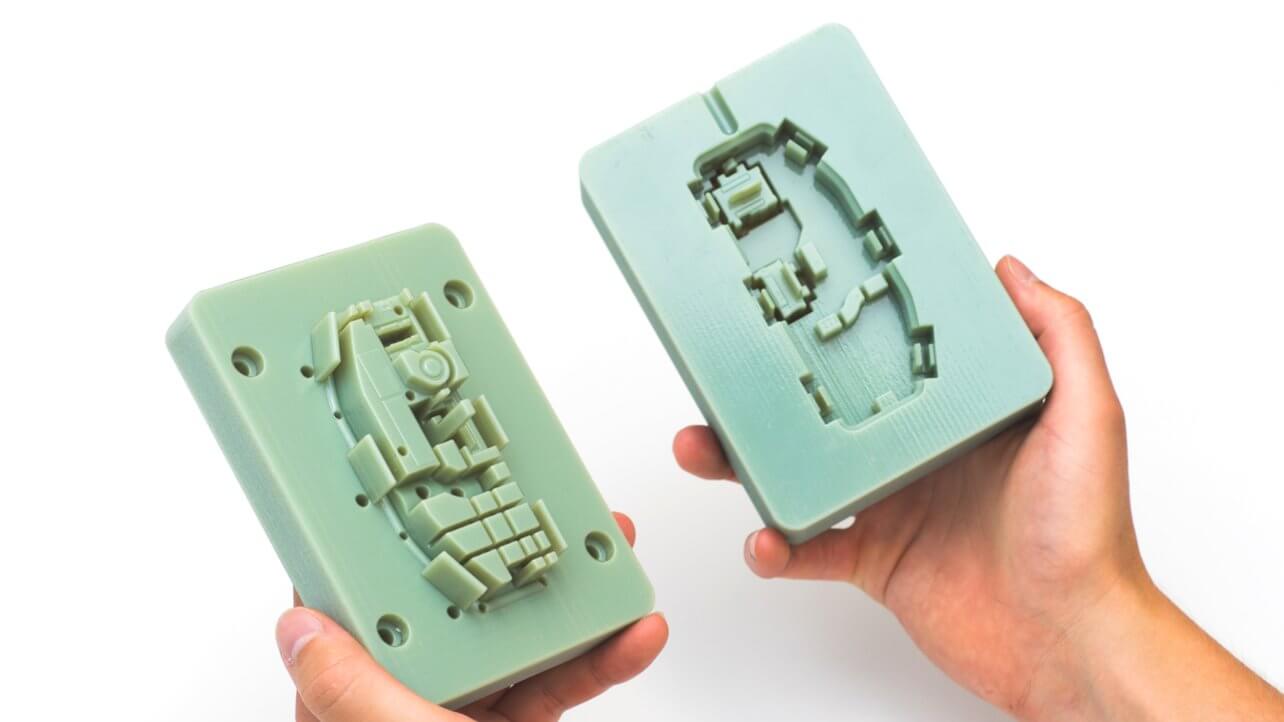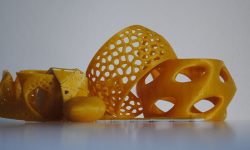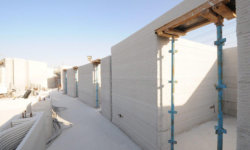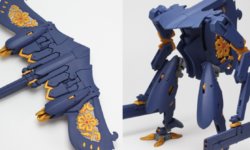Injection molding is the world’s most popular process for manufacturing plastic parts. Using durable metal molds, injection molding makes it possible to create hundreds of thousands of units in a short space of time.
And molding isn’t expensive. At least, injecting a shot of material into a mold isn’t: the process is lightning-fast, and pellets are an inexpensive form of plastic. But molds themselves are expensive, most of them being made from premium metals and fabricated with manual or CNC machining.
For prototypes and short-run manufacturing, a professional mold may be far beyond a company’s budget. And even the most affordable aluminum molds — made by rapid tooling — are still too expensive for some projects.
One way to make injection molded parts at a very low cost is to simply 3D print the molds. These plastic molds won’t last a long time, and they certainly can’t be used for mass manufacturing, but they work well for certain quick prototypes.
This article looks at how and why you might use 3D printing to fabricate plastic molds for injection molding.
Why use 3D printing for molds?
3D printing is not widely used as a moldmaking tool. Instead, it is most commonly used for rapid prototyping and small-batch production of custom parts.
However, when injection molding parts on a strict budget, 3D printing offers a few possibilities. Additive manufacturing is very cheap, with minimal setup costs, and can be used to create a one-off item like a mold.
3D printed molds are far less solid and durable than even the flimsiest machined metal molds, but they are good enough for certain prototypes made from certain materials.
For the vast majority of cases, 3ERP recommends CNC machining for the creation of injection molding molds.
Which industries use 3D printing for molds?
Some sectors use 3D printing fairly regularly for moldmaking, though not often for injection molding.
Jewelers, for example, often use Stereolithography (SLA) 3D printers to assist the process of investment casting. After 3D printing a model of a piece of jewelry, the jeweler can use the model as a positive pattern to make a mold. The 3D printed model can then be burnt out, leaving behind just the mold, which can itself be used to make the metal jewelry.
The dental industry uses 3D printers in a similar way. Dental professionals can now generate a 3D model of a patient’s teeth, then create an inverse model of those teeth using a 3D printer. That printed model can then function as a mold, and can be used to make patient-specific dental aligners and retainers from soft, medically safe materials.
What kind of 3D printer is best for making molds?
FDM 3D printers — the most common desktop 3D printers — are not particularly suitable for making molds. That’s because FDM printed parts typically have a rough surface with layer lines.
Better AM technologies for moldmaking include material jetting 3D printing and Stereolithography 3D printing.
Both technologies offer a high level of detail and accuracy, as well as a good surface finish that facilitates smooth material flow during the injection process.
3D printable materials for molds
A range of 3D printable plastics can be used to make molds for injection molding. However, a material must have a high enough temperature resistance to maintain its shape even while molten plastic is injected into it.
The higher the melting temperature of the injected plastic, the higher the heat deflection temperature of the mold needs to be.
For material jetting, a widely used moldmaking material is Stratasys Digital ABS, which has a heat deflection temperature of up to 95°C. Stratasys says the material is “ideal for rapid prototyping snap-fit parts for high or low temperature use, functional designs with multi-material versatility and flexibility, molds, manufacturing tools, electrical parts and more.”
For SLA, a common moldmaking material is Formlabs High Temperature Resin. Formlabs says “Both Clear and High Temp Resins can be used to print small functional molds, with High Temp offering compatibility with a wider range of thermoplastic melt temperatures… The relatively high stiffness of High Temp Resin means that the mold will not deform when removing the part.”
Designing a 3D printed mold
When designing a 3D printed mold, it is important to consider two things: whether the design will print well, and whether the printed mold will function properly when molten plastic is injected into it.
For a well printed mold:
- Keep support structures on exterior of mold, away from mold cavity. This ensures that imperfections caused by support removal do not appear on molded parts.
- Print at highest resolution with lowest layer heights to reduce stepped effect on curved features.
- Incorporate air vents to reduce chances of trapped air and bubbling.
For effective molding:
- Maintain thin walls with consistent thickness throughout.
- Add draft angles to facilitate part ejection.
- Incorporate radii; no sharp edges or corners.
For more design tips, read our design tips for Stereolithography 3D printing. Then read our guide on designing parts for injection molding.
Framed or unframed?
A good way to prolong the lifespan of a 3D printed mold is to use an aluminum frame. The printed mold is placed within the metal frame, which protects the more fragile plastic mold from pressure and heat produced by the nozzle of the injection molding machine.
Because the mold sits snugly within the aluminum frame, it is also protected from warping after repeated injections. Additionally, the frame contains a channel which connects the injection molding nozzle to the sprue of the printed mold, eliminating need for direct contact between the nozzle and mold.
Aluminum frames are much more durable than the 3D printed molds placed within them. This means manufacturers can use a single aluminum frame for several different molds, which in turn can be used to produce multiple molded units.
It is possible to use a printed mold without a frame, but this requires more 3D printing material and leaves the molds more susceptible to warping.
Alternative methods
Injection molding with 3D printed molds may be a good option for businesses with access to an SLA or material jetting 3D printer.
However, small runs of molded plastic parts can also be achieved with vacuum casting. Vacuum casting uses inexpensive silicone molds to quickly fabricate plastic prototypes. As with 3D printed molds, the silicone molds have a short lifespan.
Vacuum casting may be preferable, as it produces molded parts with an extremely smooth surface finish.
3ERP is an experienced provider of manufacturing services such as 3D printing, injection molding, CNC machining and vacuum casting. Get in touch for a free quote.






